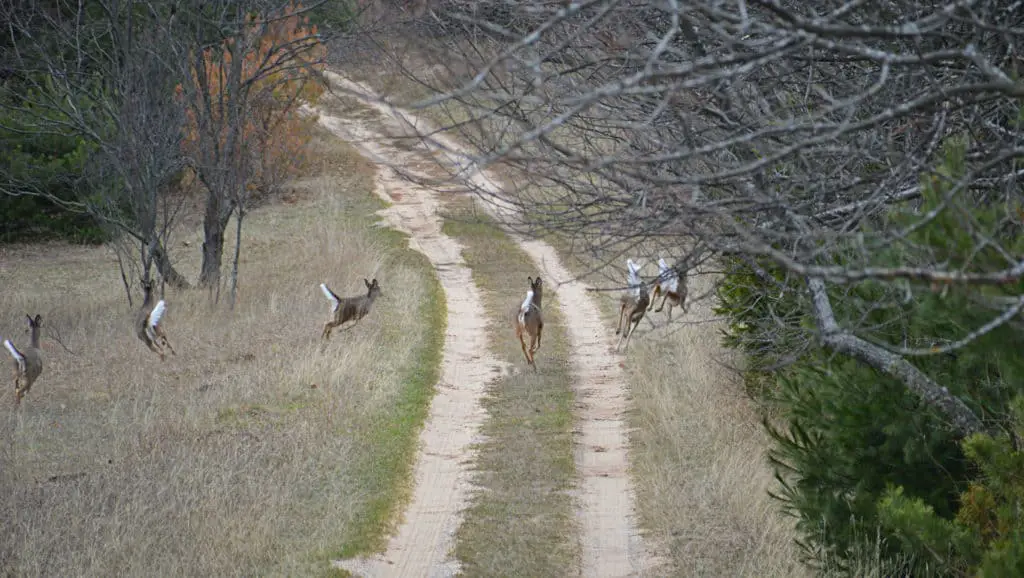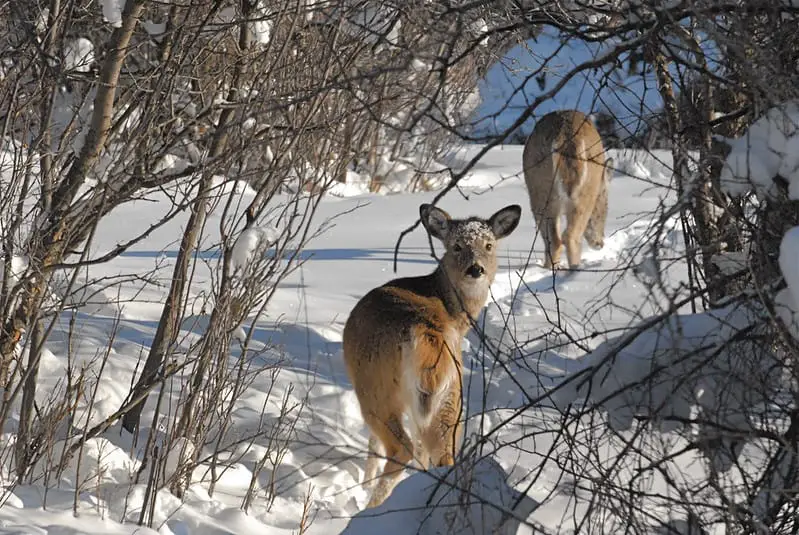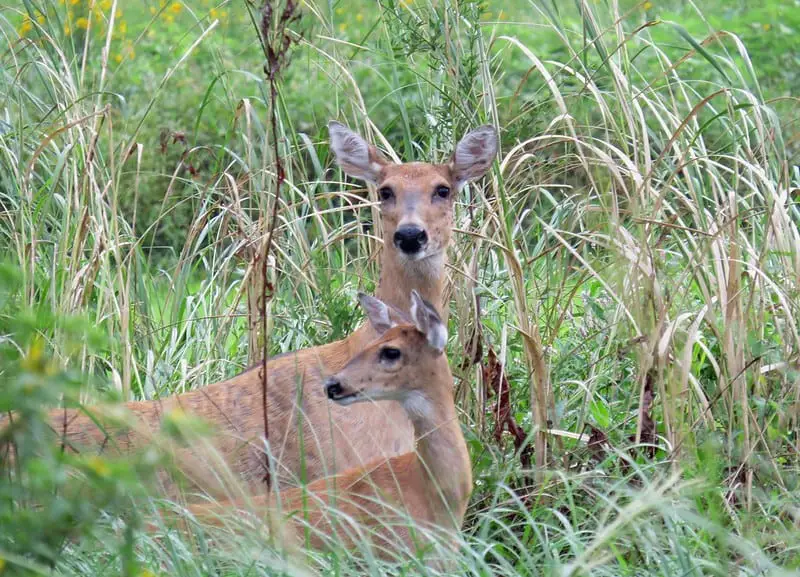Many deer hunting stalks end with buck snorts and fleeing deer. The sudden noise and movement in the once quiet and peaceful woods startle the deer hunter. The momentary confusion caused by the explosive snort, careening bodies, and snapping branches allows the deer to escape before the hunter can isolate a target and shoulder their weapon.
It all looks clumsy and inelegant. The typically graceful and silent movements of deer are replaced by awkward, klutzy leaps that bang heads into branches and rent the tranquil forest with a clatter of kicked rocks, tripped over branches, and stumbling feet. It looks like thoughtless flight and mindless panic.

Contrast this scene with that of a deer hunter spotted while still a safe distance away. Along with graceful, high bounds and much slower rate of speed, the deer now flash the large white portion of their rump and tail.
The deer hunter has been busted in both cases, but is there anything they can do to save the day?
Related: What is the best time of day to hunt deer?
Related: How to plant a deer food plot.
Buck snorts: When and why.
There are two types of buck snorts; the involuntary snort and the warning snort. Bucks involuntary snort when they notice a predator has seen them and is about to attack. Bucks make warning snorts when they detect a safely distant predator and want to alert other group members.
Involuntary snort. A buck suddenly discovering that it has been seen by a dangerously close predator and is about to be attacked reacts by explosively exhaling and immediately fleeing. A startled buck snorts, turns from the threat, and pours on all the speed it can summon. The buck’s flight is louder than an entire orchestra falling down a marble staircase.
Does an involuntary snort benefit other members of the buck’s group? Some researchers certainly think it does. Deer researchers say it is an alarm that alerts nearby group members of a severe and imminent threat. And the snort itself costs the fleeing buck nothing in terms of decreasing its chances of survival.
Warning snorts. When a buck detects a potential threat at a distance and is concealed from that threat, it may give away its position to alert other group members. If and when a buck issues a warning snort depends on who the other group members are and their relation to him.
While doe-fawn parties will almost always snort in such circumstances, bucks will snort only when in the company of other family members. When traveling in bachelor groups, a buck is likely to mutely slip away and potentially increase his mating odds by leaving his competition exposed.
Related: Deer feed and baiting.

Deer flagging: When and Why.
Whitetail deer flag their tails, alone or in a group, toward an approaching threat (not toward other deer), mostly when they feel they are a safe distance away. Tail flagging momentarily stuns predators and fixes their attention on a large white patch, which the withdrawing deer quickly conceal.
Although we have long believed deer flag their tails to warn other group members, single deer also react this way to a distant threat has raised doubts about this theory. The theory that flagging alerts predators to the fact that they have been detected provides many benefits to the deer.
A detected threat, like a coyote or wolf, will now have to decide if expending calories for a long chase is worth it. If it does opt to pursue, the predator may foolishly seek a large bounding white flag— a flag the deer can quickly hide as soon as visible contact is broken off.
This theory that deer flag their tails to discourage or evade pursuit is further supported by deer’s known reluctance to reflag after they have stopped fleeing and again sought to use cover to conceal their location.
Related: All about deer warts.

Do buck snorts, tail flags and fleeing deer end your hunt?
If you get busted during deer hunting, it isn’t always the end of your day.
The very first thing you should do is remain motionless. If your meeting was a chance encounter while the deer were foraging, they might return soon. How soon they return depends on how much pressure you put on them in the original moment they discovered you and immediately after.
If a buck spots you, instantly snorts, and all the group members flee, the panic induced on them could stall their return for an extended time. It probably isn’t worth it for you to remain in the area.
If you bumped them off a bedding site, you have two options. Note the bedding location and return later, or set up downwind of the bedding area and prepare to wait for several hours for the deer to return.
In the end, there’s no real way to predict when deer will return after being spooked or how many times a buck can bust you and keep returning to the exact location. But when you know deer like to inhabit a particular spot, that information is something you should use.
Keep hunting that spot, even if it means letting it “cool off” for a few hours or days.
Related: Do deer car whistle work?


